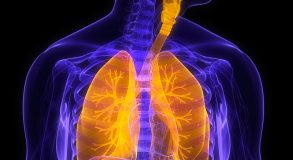Occupational asthma is a type of respiratory disease caused by an abusive work. When choosing a profession or working place, few people think about how it will affect health. However at first glance conditions are harmless, when you are working as a hairdresser, beautician librarian, pharmacist or pet shop seller. Such a profession may contribute to quite a serious disease – asthma. Researchers around the world have come to a disappointing conclusion – one out of 5 asthmatic diseases appears because of human’s profession.
Causes
- Allergens of animal origin – silk, wool, animal hair, feathers, bees, vegetables, flies, worms. Veterinarians, hairdressers, light and leather industry workers, the sellers of pet stores usually deal with such allergens.
- Allergens of plant origin – pollen, wood dust, oils, flax, tobacco, cotton, grain and flour dust. Flour and confectionery industries workers, agriculture, wood industry, tobacco factories and spinning mills, beauticians come into contact with these substances.
- Chemical allergens – synthetic polymers, dyes, pesticides, formalin, chromium, nickel, cobalt, manganese, platinum drugs. They confront people of different professions – pharmacologists, pharmacists, doctors, workers of the chemical and microbiological industry.
- Occupational asthma can be caused by irritating substances, such as organic solvents, gases, quartz-bearing dust.

How is it Manifested?
Allergy or asthma attack starts with a runny nose and watery eyes, then choking begins. All these troubles are terminated as soon as the person leaves the operating room. Sometimes this disorder is accompanied by allergic reactions to skin dermatitis or eczema. Between attacks, breath shortness is more often present when the exhaling difficulty is observed.
There is atopic asthma form that is associated with “allergy to work.” Typically, this form of disease develops after prolonged contact with chemical allergens. In the first 2-3 years of disease, it is fairly easy. A marked improvement, and sometimes recovery may come at a timely transition to other work where there is no contact with allergens.
Most asthmatics are not just suffered from acute respiratory infections, bronchitis, pneumonia. Therefore, work associated with a professional allergen may contribute to the mixed nature. In such cases, avoiding contact with allergen industrial does not terminate breathlessness attacks. With a cough mucopurulent sputum is released, when the bacteriological study is conducted which found streptococci, staphylococci, pneumococci and other bacteria.
It is noticed that people working with organic solvents, asthma has relatively mild. Such a respiratory disorder usually occurs at work, on weekends or during holidays become less frequent or disappear completely.
Asthma caused by dust (in concentrations exceeding the maximum permissible limits), has a more severe course. The disease is often complicated by emphysema and respiratory insufficiency. Even if asthmatic stops dust inhalation, his health state does not improve significantly.
Working Place for Asthmatics
 The diagnosis of “occupational asthma” can be established by a doctor-pathologist – a specialist in occupational diseases field. To do this, he needs to study:
The diagnosis of “occupational asthma” can be established by a doctor-pathologist – a specialist in occupational diseases field. To do this, he needs to study:
- sanitary conditions of patient labor;
- the so-called professional route (all places of work and its duration in a particular area);
- if patient’s allergic reactions to certain allergens prior to the disease.
Diagnosis
Laboratory methods of research that are carried out only during disease’s remission may include:
- skin tests with allergens of plant and animal origin;
- provocative inhalation tests with minimal concentrations of chemical allergens.
The required tools and survey methods are:
- lungs X-ray;
- bronchoscopy with bronchial mucosa biopsy;
- study of respiratory function to determine a degree of bronchial patency disturbance.
The legal right to establish a diagnosis of “occupational asthma” have only specialized medical institutions, trade union centers. Headquarters, performing the role of an arbitrator in contentious cases is the Research Institute of Occupational Medicine of Medical Sciences. Medications for treatment and prevention are ordered via Canadian Health Care Mall, online pharmacy providing people with wide range of medications worldwide.
If a professional diagnosis was confirmed, asthmatics should be given a job, eliminating contact with allergens and irritants. Law prohibits his dismissal by the administration. In the case of reducing asthmatic disability sent to Bureau of Medical and Social Expertise to establish disability degree, and possible disability, for which company will pay pension.
Treatment
Scientists are constantly searching for drugs for bronchial asthma treatment. Now in an arsenal of physicians, several groups of drugs are observed. Basically, they are bronchodilators, anti-inflammatory and expectorant drugs.
Great importance in asthma treatment is played by mental attitude. It is clear that such a serious disease sometimes leads to painful breathing complications, decreased physical and social activity, and can result in neurotic disorders. How to help for asthmatic patients can be studied in asthma-specific schools that are created on basis of district clinics, medical centers and hospitals.
Prevention
The basis of occupational asthma prevention is a rigorous selection of applicants for the job if working conditions involve occupational hazard. It is unacceptable to take on this type of work people with allergies, lungs chronic diseases and disorders of an upper respiratory tract, often known as ARVI. If these conditions are not respected by employers try to pay attention to the choice of working place themselves.



